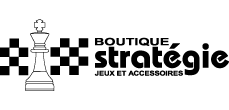After 4 months of nightly ruminations I "graduated" to my first chess book: Chess Openings: Theory and Practice by I.A. Horowitz. It cost me eight dollars, which was a lot of money for me in those days, but it was worth every penny and than some. I literally tore that book apart over about two years. I took it with me everywhere I went. At school I would slip that book under my desk and follow the lines in my head every chance I got, which in some classes was quite a lot as the teacher, who was in love with himself, or herself, would drone on. The book was quite heavy (784 pages) but that didn't deter me. It was also a lot of blindfold practice. I used to take the bus quite often downtown and the book went with. More times than I could count I would so get into the book analysing variations that I would miss my stop. The bus run that I did most often was the Huron Heights / Westmount. It started out in north east London at the edge of the city (close to my stop), made its way downtown and then out to the southwest side of the city limits. There the bus would sit for fifteen minutes while the driver went into the Tims for a break.So in total I added about an hour and a half to my thinking time. I think my subconscious sabotaged me on many occasions. It was more fun for it to do chess variations than go to any of the mundane places that I was supposed to be going to.
I learned my openings thoroughly this way. For example I learned the Reti Opening this way. It was my first major opening as White. The section on the Reti was broken down into three parts. Part 1 Symmetrical Variation 1.N-KB3, N-KB3 2.P-B4, P-B4 3.P-Q4a, PxPb 4.NxP followed by a big diagram. and then followed by: Observations on Key Position 1 (about two paragraphs with variations.} Next was the Idea Variations 1 and 2 which my mind just loved. Basically these were variations with discussion lines that included counterattacking ideas and other resourceful moves. One cryptic note for example in variation one states: "this move, Najdorf's innovation, is White's best chance" or in variation 2 : after 5...P-Q4! : "this advance is always plausible when White has played N-QB3; compare the Grunfeld Defense"
The stem game was: Boleslavski - Szabo, Zurich 1953 (no less!) and under it was Practical Variations 1 and 2. The reason I mention all this is that It gave my mind plenty to play with and debate, analysis from both sides with grandmaster idea reinforcement. This was serious stuff!
Part 2 Queen's Indian Defensive Method was followed by Observations and Idea Variations and Practical Variations and the stem game: Reshevsky-Keres, The Hague, 1948
Part 3 King's Indian Defensive Method was followed by Observations and Idea Variations and Practical Variations and the stem game was Reti-Capablanca, New York 1924 I was debating Capablanca! (although probably not very well) This was followed by Supplementary Variations for N-KB3. It was the best way to learn openings at the time and I did it all in my head. Occasionally I checked lines on a real board but not often.
It wasn't until I got Ray Keene's Flank Openings a couple of years later that I could add more depth.
Anyways, one of the great keys to my progress in blindfold chess was the joy of debating variations in my mind. I am convinced that the joy must be there to make great progress.
I learned my openings thoroughly this way. For example I learned the Reti Opening this way. It was my first major opening as White. The section on the Reti was broken down into three parts. Part 1 Symmetrical Variation 1.N-KB3, N-KB3 2.P-B4, P-B4 3.P-Q4a, PxPb 4.NxP followed by a big diagram. and then followed by: Observations on Key Position 1 (about two paragraphs with variations.} Next was the Idea Variations 1 and 2 which my mind just loved. Basically these were variations with discussion lines that included counterattacking ideas and other resourceful moves. One cryptic note for example in variation one states: "this move, Najdorf's innovation, is White's best chance" or in variation 2 : after 5...P-Q4! : "this advance is always plausible when White has played N-QB3; compare the Grunfeld Defense"
The stem game was: Boleslavski - Szabo, Zurich 1953 (no less!) and under it was Practical Variations 1 and 2. The reason I mention all this is that It gave my mind plenty to play with and debate, analysis from both sides with grandmaster idea reinforcement. This was serious stuff!
Part 2 Queen's Indian Defensive Method was followed by Observations and Idea Variations and Practical Variations and the stem game: Reshevsky-Keres, The Hague, 1948
Part 3 King's Indian Defensive Method was followed by Observations and Idea Variations and Practical Variations and the stem game was Reti-Capablanca, New York 1924 I was debating Capablanca! (although probably not very well) This was followed by Supplementary Variations for N-KB3. It was the best way to learn openings at the time and I did it all in my head. Occasionally I checked lines on a real board but not often.
It wasn't until I got Ray Keene's Flank Openings a couple of years later that I could add more depth.
Anyways, one of the great keys to my progress in blindfold chess was the joy of debating variations in my mind. I am convinced that the joy must be there to make great progress.


Comment